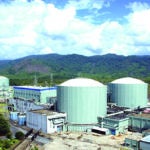The fourth unit of India’s Kaiga Generating Station, a 220-MW indigenous reactor that achieved first criticality on Nov. 27, 2010, was synchronized to the grid last week. The unit now brings India’s nuclear power capacity to 4,780 MW with 20 reactors in operation, state-owned Nuclear Power Corporation of India Limited (NPCIL) said.
Like the other three units in operation at the Kaiga site in the southern Indian state of Karnataka, Kaiga 4 is a domestically designed pressurized heavy water reactor (PHWR). The Kaiga Generating Station now has a capacity of 880 MW, making it the third-largest in India’s nuclear fleet after Tarapur (1,400 MW) and Rawatbhata (1,180 MW).
The unit will be fueled by indigenous uranium and will supply power to the states of Andhra Pradesh, Karnataka, Kerala, and Tamilnadu and the Union Territory of Puducherry.
Several more indigenous reactors are under construction in India, and the country has others in the pipeline. In late 2008, as part of the 11th Five Year Plan (2007–2012), the nuclear body outlined an “augmentation plan” that included the eight indigenous PHWRs, three or four fast breeder reactors, and one 300-MW advanced heavy water reactor. Then, according to the World Nuclear Association, NPCIL intends to set up five additional “nuclear energy parks,” each with a capacity of up to 10,000 MW. Proposed units, likely new-generation reactors, are expected to provide up to 45 GW, bringing the country’s nuclear capacity to nearly 63 GWby 2032.
Sources: POWERnews, NPCIL, POWER








